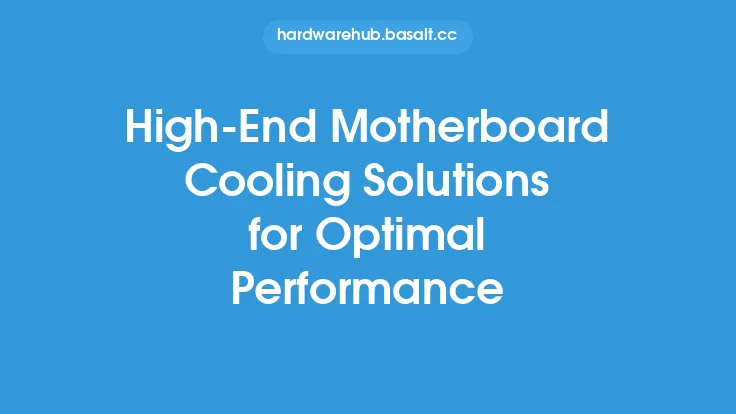When it comes to enhancing gaming performance, one of the most critical components to focus on is the motherboard. The motherboard acts as the backbone of the computer, connecting all the hardware components together and facilitating communication between them. By tweaking the motherboard settings, gamers can unlock significant performance gains, leading to a smoother and more immersive gaming experience.
Introduction to Motherboard Tweaking
Motherboard tweaking involves adjusting the settings and configurations of the motherboard to optimize its performance for gaming. This can include adjusting the clock speeds of the CPU and RAM, tweaking the voltage settings, and configuring the BIOS settings for optimal performance. Motherboard tweaking requires a good understanding of the underlying hardware and software components, as well as the ability to navigate the BIOS settings and make adjustments.
Understanding Motherboard Components
To tweak the motherboard for enhanced gaming performance, it's essential to understand the various components that make up the motherboard. The CPU (Central Processing Unit) is the brain of the computer, responsible for executing instructions and handling calculations. The RAM (Random Access Memory) provides temporary storage for data, allowing the CPU to access it quickly. The chipset is the component that connects the CPU to the rest of the motherboard, managing data transfer and communication between the various components. The BIOS (Basic Input/Output System) is the firmware that controls the motherboard's settings and configurations.
BIOS Settings for Gaming Performance
The BIOS settings play a critical role in determining the motherboard's performance for gaming. The BIOS settings can be accessed by pressing a specific key (usually F2, F12, or Del) during boot-up. Once inside the BIOS settings, gamers can adjust various parameters to optimize performance. The CPU multiplier, for example, can be adjusted to increase the clock speed of the CPU. The RAM timings can also be tweaked to improve memory performance. Additionally, the BIOS settings can be used to configure the power management settings, such as the CPU voltage and the fan settings.
Overclocking the CPU and RAM
Overclocking the CPU and RAM can provide significant performance gains for gaming. Overclocking involves increasing the clock speed of the CPU or RAM beyond its default settings. This can be done using the BIOS settings or through software tools such as Intel Extreme Tuning Utility or AMD Overdrive. However, overclocking also increases the risk of system instability and damage to the components. Therefore, it's essential to monitor the system's temperatures and voltages closely and to make adjustments gradually.
Voltage Settings for Optimal Performance
Voltage settings play a critical role in determining the motherboard's performance for gaming. The CPU voltage, for example, can be adjusted to optimize performance while minimizing power consumption. The RAM voltage can also be tweaked to improve memory performance. However, increasing the voltage settings can also increase the risk of system instability and damage to the components. Therefore, it's essential to monitor the system's temperatures and voltages closely and to make adjustments gradually.
Cooling and Thermal Management
Cooling and thermal management are critical components of motherboard tweaking for gaming performance. The CPU and RAM can generate significant heat during intense gaming sessions, which can lead to system instability and damage to the components. Therefore, it's essential to ensure that the system has adequate cooling, such as a high-quality CPU cooler and a well-ventilated case. Additionally, the BIOS settings can be used to configure the fan settings and to monitor the system's temperatures.
Monitoring and Benchmarking
Monitoring and benchmarking are essential components of motherboard tweaking for gaming performance. Gamers can use software tools such as CPU-Z, GPU-Z, and HWiNFO to monitor the system's temperatures, voltages, and performance. Benchmarking tools such as 3DMark and Unigine Heaven can be used to measure the system's performance and to identify areas for improvement. By monitoring and benchmarking the system, gamers can make informed decisions about their tweaking efforts and optimize their system for the best possible performance.
Conclusion
Tweaking the motherboard for enhanced gaming performance requires a good understanding of the underlying hardware and software components, as well as the ability to navigate the BIOS settings and make adjustments. By adjusting the clock speeds, voltage settings, and BIOS settings, gamers can unlock significant performance gains and enjoy a smoother and more immersive gaming experience. However, motherboard tweaking also requires careful monitoring and benchmarking to ensure that the system remains stable and performs optimally. With the right knowledge and skills, gamers can unlock the full potential of their motherboard and take their gaming experience to the next level.





